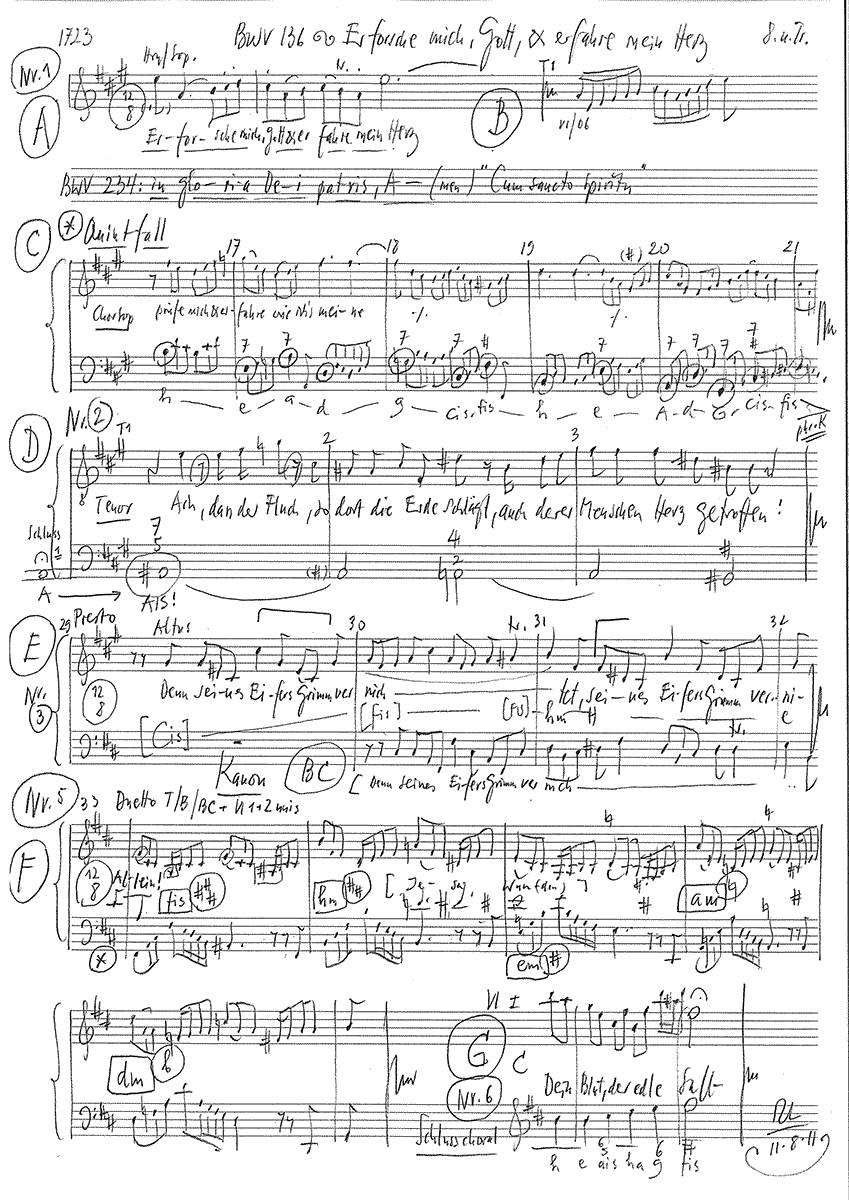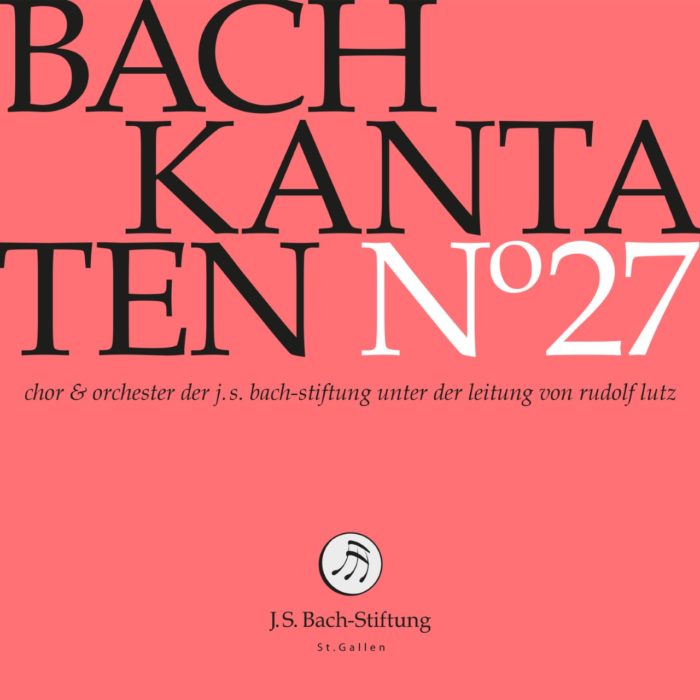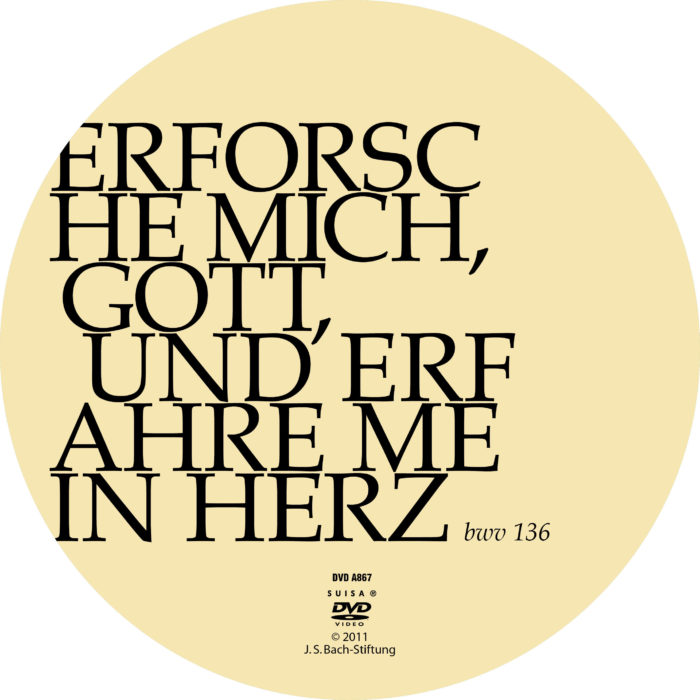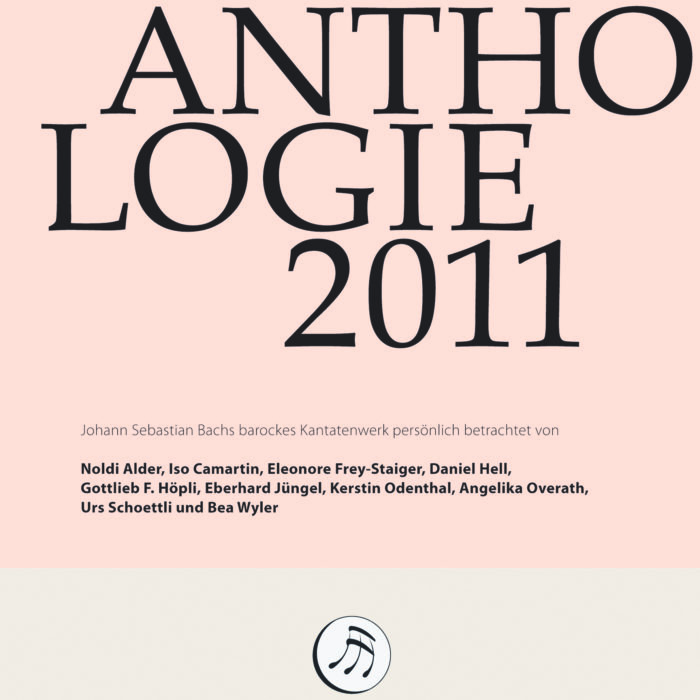Erforsche mich, Gott, und erfahre mein Herz
BWV 136 // For the Eight Sunday after Trinity
(Examine me, God, and discover my heart) for alto, tenor and bass, vocal ensemble, horn, oboe, oboe d’amore, bassoon, strings and continuo
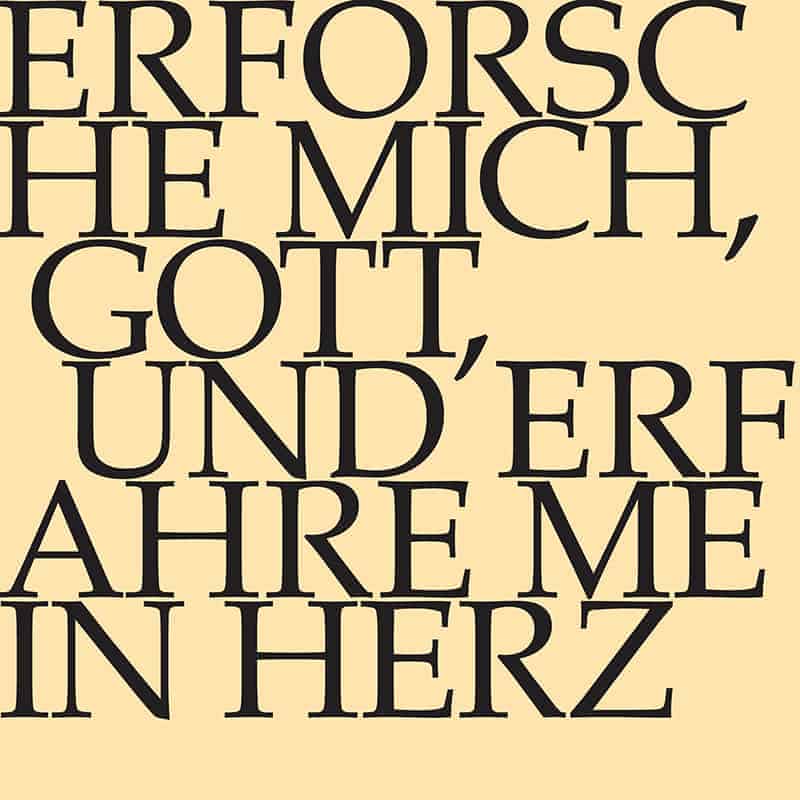
Would you like to enjoy our videos ad-free? Subscribe to YouTube Premium now...
Workshop
Reflective lecture
Choir
Soprano
Susanne Frei, Leonie Gloor, Guro Hjemli, Noëmi Sohn, Noëmi Tran Rediger
Alto
Jan Börner, Antonia Frey, Olivia Heiniger, Damaris Nussbaumer, Alexandra Rawohl
Tenor
Clemens Flämig, Manuel Gerber, Nicolas Savoy, Walter Siegel
Bass
Fabrice Hayoz, Chasper Mani, Valentin Parli, Philippe Rayot
Orchestra
Conductor
Rudolf Lutz
Violin
Renate Steinmann, Plamena Nikitassova, Christine Baumann, Sylvia Gmuer, Martin Korrodi, Olivia Schenkel
Viola
Susanna Hefti, Martina Bischof
Violoncello
Maya Amrein, Martin Zeller
Violone
Iris Finkbeiner
Oboe
Katharina Arfken, Dominik Melicharek
Bassoon
Susann Landert
Corno
Olivier Picon
Organ
Norbert Zeilberger
Harpsichord
Thomas Leininger
Musical director & conductor
Rudolf Lutz
Workshop
Participants
Karl Graf, Rudolf Lutz
Reflective lecture
Speaker
Bea Wyler
Recording & editing
Recording date
08/12/2011
Recording location
Trogen
Sound engineer
Stefan Ritzenthaler
Director
Meinrad Keel
Production manager
Johannes Widmer
Production
GALLUS MEDIA AG, Switzerland
Producer
J.S. Bach Foundation of St. Gallen, Switzerland
Librettist
Text
Poet unknown
Text No. 1
Quote from Psalm 139:23
Text No. 6
Johann Heermann, 1630
First performance
Eighth Sunday after Trinity,
18 July 1723
In-depth analysis
Written for the Eighth Sunday after Trinity in 1723, BWV 136 was one of the first cantatas performed in Bach’s Leipzig tenure. Wilhelm Rust, the first publisher of the work in 1881, conjectured that the composition was a revival of an earlier work from Weimar, but this can be neither confirmed nor refuted based on the extant sources; what is known, however, is that Bach reused the introductory chorus
in 1727 for the “cum sancto spiritu” movement of his Mass in A Major (BWV 234), prefacing it with a solemn “grave” section in triple metre.
With its lively 12/8 metre and sprightly horn part, the introductory chorus is so cheerful in
tone that listeners could be forgiven for thinking the Sunday Gospel, with its warning of false prophets and the uncertainty of salvation (Matthew 7:15–23), has been oddly misinterpreted. Indeed, the music sounds more akin to a self-assured declaration of “Test me if you will, for I am clean as a whistle!” than the expected expression of fearful remorse. But because the movement is based on a dictum from Psalm 139 professing the presence of a God that precedes all human experience, the confident tone of the music
can be understood as an expression of supreme comfort and reassurance – even culminating in a certain zeal to know that the right path was chosen. This interpretation of the Bible – coherent in itself and nambiguously rousing – possibly explains why Bach did not set each phrase successively but instead
framed the text in a series of complete statements; it is an unconventional solution that musically reflects the ardent desire to be deemed steadfast in the eyes of the Lord.
The tenor recitative, commencing with a dissonant “Ach!” (Ah!) once again takes up the gospel metaphor of “good and bad fruit”, where the “thorns of sin” and “wicked thistles” serve as proof of the doomed nature of human striving. In an accelerated pace, the recitative then warns of the children of hell masquerading as angels of light and reveals the folly of placing hope in such literally sour grapes. In this agitated music, Bach makes audibly clear that the dawning of judgement day will put a terrifying end to all such perversions.
Set over a relentlessly marching bass line, the alto aria in F minor begins with a cantilena by the oboe d’amore, whose noble modulations are reminiscent of a gentle warning rather than a threatening gesture. Here, the solo alto calls to mind the supressed voice of conscience in a world of hypocrites and pretenders, ere the presto middle section evokes the annihilation of the imposters through the wrath of the Lord – a dramatic outburst that bestows considerable gravitas on the repeat of the A section.
The bass recitative then raises theological arguments against such depravity, arguments that are a somewhat round-about interpretation of Luther’s tenet of justification through faith. Since “the heaven’s themselves are not pure”, in other words, not free of error or fallen angels, no human could pass heavenly judgement – were it not for the fact that Christ’s sacrifice has already atoned for the paucity of good deeds and all sin. The notion that every believer can, through Christ, partake of the Lord’s justice and strength is made manifest in the paternal dignity of Bach’s arioso closing phrase.
In the duet for tenor and bass, however, this newly gained strength is scarcely perceptible. Introduced by two violins in unison, whose edgy impetus calls to mind the closing movement of a violin concerto, the two vocalists open the movement with self-recriminations related to Adam’s fall. In this quasi Lutheran bel canto of the conscience, Jesus’ wounds are portrayed as a purifying “mighty stream of blood”. But there is little of joyful anticipation and liberation to be heard in this dense setting: salvation through the cross remains an impenetrable holy act that defies human comprehension.
With the ninth chorale verse of the hymn “Wo soll ich fliehen hin”, Bach resumes this gesture by transforming talk of the miraculous power of Jesus’ blood into a poignant song of overcoming earthly sin and gaining absolution in the hereafter. Accordingly, the light A major tonality of the introductory chorus is eschewed in favour of a cutting B minor setting, whose end-of-days force is counterbalanced by the valiant violin part, soaring forth heavenwards.
Libretto
1. Chor
«Erforsche mich, Gott, und erfahre mein Herz; prüfe mich und erfahre, wie ichs meine!»
2. Rezitativ (Tenor)
Ach, daß der Fluch, so dort die Erde schlägt
auch derer Menschen Herz getroffen!
Wer kann auf gute Früchte hoffen,
da dieser Fluch bis in die Seele dringet,
so daß sie Sündendornen bringet
und Lasterdisteln trägt.
Doch wollen sich oftmals die Kinder der Höllen
in Engel des Lichtes verstellen;
man soll bei dem verderbten Wesen
von diesen Dornen Trauben lesen.
Ein Wolf will sich mit reiner Wolle decken,
doch bricht ein Tag herein,
der wird, ihr Heuchler, euch ein Schrecken,
ja unerträglich sein.
3. Arie (Alt)
Es kömmt ein Tag,
so das Verborgne richtet,
vor dem die Heuchelei erzittern mag.
Denn seines Eifers Grimm vernichtet,
was Heuchelei und List erdichtet.
4. Rezitativ (Bass)
Die Himmel selber sind nicht rein,
wie soll es nun ein Mensch vor diesem
Richter sein?
Doch wer durch Jesu Blut gereinigt,
im Glauben sich mit ihm vereinigt,
weiß, daß er ihm kein hartes Urteil spricht.
Kränkt ihn die Sünde noch,
der Mangel seiner Werke,
er hat in Christo doch
Gerechtigkeit und Stärke.
5. Arie (Tenor, Bass)
Uns treffen zwar der Sünden Flecken,
so Adams Fall auf uns gebracht.
Allein, wer sich zu Jesu Wunden,
dem großen Strom voll Blut gefunden,
wird dadurch wieder rein gemacht.
6. Choral
Dein Blut, der edle Saft,
hat solche Stärk und Kraft,
daß auch ein Tröpflein kleine
die ganze Welt kann reine,
ja, gar aus Teufels Rachen
frei, los und ledig machen.



